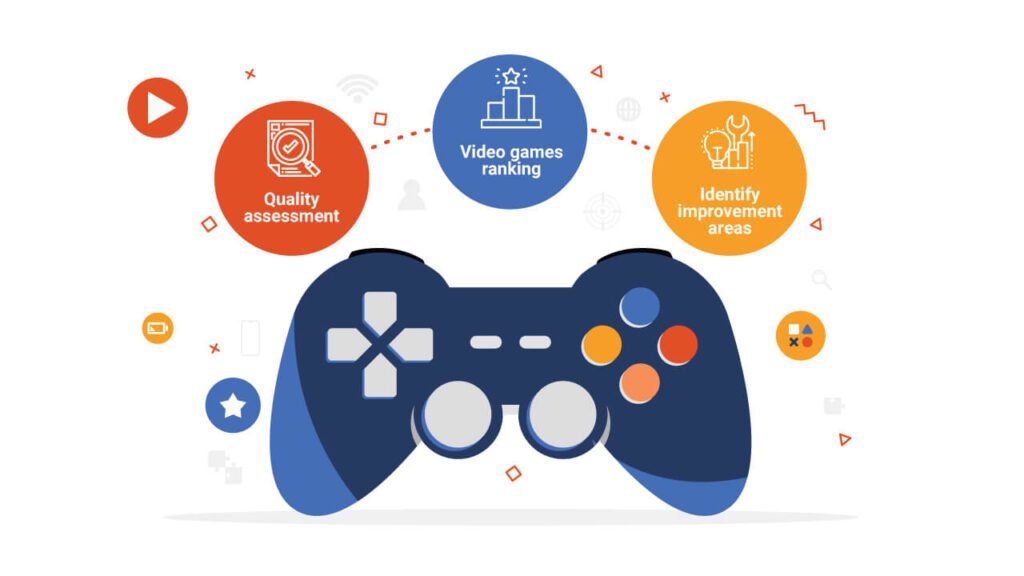Game development involves multiple stages including conceptualization, pre-production, artistic development, programming, sound design, testing, marketing, and post-release support. The process begins with brainstorming ideas and creating a game design document. Concept artists visualize the game’s visuals, while 3D modelers and animators bring them to life. Programmers implement game mechanics, sound designers create audio effects, and composers work on the music. Quality assurance testers ensure a polished product before release, and marketing teams promote the game. Developers continue to support and update the game post-release. The process requires collaboration, attention to detail, creativity, and a passion for creating memorable gaming experiences.
From Concept to Console: A Peek into the Artistic Process of Game Development
1. Introduction
Game development is a complex and creative process that involves multiple stages of planning, design, programming, and testing. From a simple concept to a fully immersive gaming experience, every game goes through a series of steps before it reaches the hands of avid players.
2. Conceptualization and Idea Generation
In this initial stage, game developers brainstorm ideas and concepts to create a unique and engaging gaming experience. They consider various factors such as target audience, genre, storyline, and mechanics. This phase involves researching market trends, conducting surveys, and getting feedback from potential players.
3. Pre-production
During pre-production, the game’s concept is further refined and fleshed out. The development team creates a game design document that outlines the game’s description, mechanics, characters, levels, and artistic direction. This document serves as a blueprint for the entire project and guides the team throughout the development process.
4. Artistic Development
4.1 Concept Art
Concept artists visualize the game’s characters, environments, and objects based on the initial design document. They create sketches, digital paintings, and storyboards to give the team a better understanding of how the game will look visually.
4.2 3D Modeling and Animation
Once the concept art is approved, 3D modelers and animators bring the game’s characters, objects, and environments to life. They use specialized software to create detailed 3D models and rig them for animation. These models undergo texturing, shading, and rendering phases to achieve the desired visual quality.
5. Programming and Gameplay Mechanics
The programming team is responsible for implementing the game mechanics and establishing the gameplay experience. They write lines of code to create character movements, enemy behaviors, physics interactions, and various other game features. This stage is crucial for ensuring a seamless and engaging user experience.
6. Sound Design and Music Composition
A game’s audio plays a significant role in enhancing the overall player experience. Sound designers create sound effects for actions, ambiances, and interactions within the game. Additionally, composers work on the musical score, providing players with an emotional and immersive auditory experience.
7. Quality Assurance and Testing
Once the game is in a playable state, quality assurance testers thoroughly examine it for bugs, glitches, and gameplay inconsistencies. They provide feedback to the development team, who then make the necessary adjustments and improvements to ensure a polished final product.
8. Release and Marketing
Once the game is complete, it is prepared for release on various gaming platforms. The marketing team works on promotional activities, creating trailers, teasers, and other marketing materials to generate excitement and attract potential players. This phase also involves working with distributors and ensuring the game meets the requirements of each platform.
9. Post-Release Updates and Support
After the game’s release, developers continue to support and update it based on player feedback. They address bugs, release patches, and even develop additional content or downloadable expansions to keep the game fresh and engaging for the player community.
10. Conclusion
The process of game development is a collaborative effort between artists, designers, programmers, and marketers. From the initial concept to the final release, each stage requires attention to detail, creativity, and a passion for creating memorable gaming experiences. Understanding this process gives players a peek behind the scenes and a deeper appreciation for the artistry involved in their favorite games.
